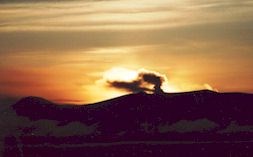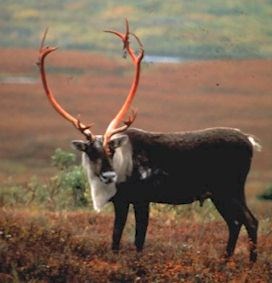
Wrangell-St. Elias National Park and Preserve is incredible. In isolation from the rest of the world, this swath of land is simply massive. It is the largest national park in the United States, with a size equal to six Yellowstone National Parks, and boasts many peaks and glaciers. Follow any braided river or stream to its source and you will find either a receding, advancing, or tidewater glacier. The park lets you sample representative Alaska wildlife as well as historic mining sites. Hike its mountains, float its rivers, ski its glaciers, or fly over its landscapes and you will witness living geology. A feeling of wonder is understandable; after all, you might be the first to see such sights. 
The Malaspina Glacier flows out of the St. Elias Range between Icy and Yakutat bays in a mass larger than the state of Rhode Island. So much glacial silt rides it that plants and trees take hold on the glacier’s extremities and grow to maturity, only to topple over the edge when it melts. Flowing from glaciers are multitudes of meandering rivers and braided streams. The largest one is the Copper River, forming the park’s western boundary. It rises in the Wrangell Mountains and empties into the Gulf of Alaska in the Chugach National Forest. In the early 1900s, the Kennecott Mining Co. transported copper from its mines near McCarthy by railroad along the Chitina and Copper rivers to ships at Cordova. Ore was extracted from these productive mines between 1911 and 1938 and lured many people to the area. Gold was extracted from the Nabesna area then too. Mining still takes place on private lands in the park, and evidence of earlier mining includes ruins of the Kennecott mines, now listed on the National Register of Historic Places. In mining's heyday, Alaska Native communities expanded, and several new towns sprang up. Copper Center, Chitina, Gulkana, and Chistochina are among some of the old Athabascan settlements. The town of Yakutat is a traditional Tlingit fishing village. 
While vegetation may appear sparse, especially in the interior, the park is home to a variety of plants and wildlife. Mountain slopes have a diversity of plants, dwarf shrubs, and grasses where Dall sheep and mountain goats patrol the craggy peaks. Interior and coastal spruce forests are home to shrubs, such as blueberry and prickly rose. Caribou feed on lichens and sedges on the slopes of the Wrangell Mountains. Moose browse in the sloughs and bogs of the forested lowlands, while bears roam throughout the park. Many rivers, streams, and lakes provide spawning grounds for salmon and other fish. The Copper River drainage marks major flyways for migratory birds and provides nesting sites for trumpeter swans. Coastal areas are habitat for marine mammals, including sea lions and harbor seals. Park Superlatives:
These facts are not the end of the superlatives! Explore the park and discover others for yourself. |
Last updated: July 22, 2025
